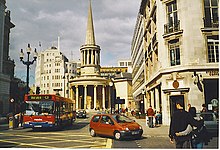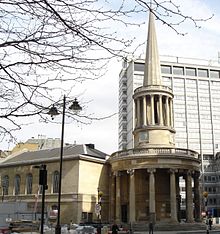
John Nash was one of the foremost British architects of the Georgian and Regency eras, during which he was responsible for the design, in the neoclassical and picturesque styles, of many important areas of London. His designs were financed by the Prince Regent and by the era's most successful property developer, James Burton. Nash also collaborated extensively with Burton's son, Decimus Burton.

The BBC Proms is an eight-week summer season of daily orchestral classical music concerts and other events held annually, predominantly in the Royal Albert Hall in central London. Robert Newman founded The Proms in 1895. Since 1927, the BBC has organised and broadcast The Proms. Each season consists of concerts in the Royal Albert Hall, chamber music concerts at Cadogan Hall, additional Proms in the Park events across the UK on the Last Night of the Proms, and associated educational and children's events. The season is a significant event in British culture and in classical music. Czech conductor Jiří Bělohlávek described the Proms as "the world's largest and most democratic musical festival".

Regent Street is a major shopping street in the West End of London. It is named after George, the Prince Regent and was laid out under the direction of the architect John Nash and James Burton. It runs from Waterloo Place in St James's at the southern end, through Piccadilly Circus and Oxford Circus, to All Souls Church. From there Langham Place and Portland Place continue the route to Regent's Park.

Regent's Park is one of the Royal Parks of London. It occupies 410 acres (170 ha) of high ground in north-west Inner London, administratively split between the City of Westminster and the Borough of Camden. In addition to its large central parkland and ornamental lake, it contains various structures and organizations both public and private, generally on its periphery, including Regent's University and London Zoo.

The Free Trade Hall on Peter Street, Manchester, England, was constructed in 1853–56 on St Peter's Fields, the site of the Peterloo Massacre. It is now a Radisson hotel.

All Souls Church is a conservative evangelical Anglican church in central London, situated in Langham Place in Marylebone, at the north end of Regent Street. It was designed in Regency style by John Nash and consecrated in 1824.

The Queen's Hall was a concert hall in Langham Place, London, opened in 1893. Designed by the architect Thomas Knightley, it had room for an audience of about 2,500 people. It became London's principal concert venue. From 1895 until 1941, it was the home of the promenade concerts founded by Robert Newman together with Henry Wood. The hall had drab decor and cramped seating but superb acoustics. It became known as the "musical centre of the [British] Empire", and several of the leading musicians and composers of the late 19th and early 20th centuries performed there, including Claude Debussy, Edward Elgar, Maurice Ravel and Richard Strauss.
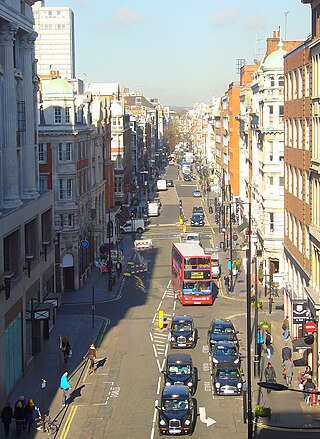
Great Portland Street in Marylebone, in the West End of London, links Oxford Street with the A501 Marylebone Road. A commercial street, it divides Fitzrovia, to the east, from Marylebone to the west. It delineates areas with contrasting identities, the west at strongest in grandiose Portland Place and Harley Street, the east at strongest in artists' and independent businesses of Fitzrovia. Administratively, the street lies in the City of Westminster's West End ward.

The Langham, London, is a 5-star hotel in London, England. It is situated in the district of Marylebone on Langham Place and faces up Portland Place towards Regent's Park.

Cumberland Terrace is a neoclassical terrace on the eastern side of Regent's Park in the London Borough of Camden, completed in 1826. It is a Grade I listed building.

Chester Terrace is one of the neo-classical terraces in Regent's Park, London. The terrace has the longest unbroken facade in Regent's Park, of about 280 metres (920 ft). It takes its name from one of the titles of George IV before he became king, Earl of Chester. It now lies within the London Borough of Camden.

Cadogan Hall is a 950-seat capacity concert hall in Sloane Terrace in Chelsea in the Royal Borough of Kensington and Chelsea, London, England.
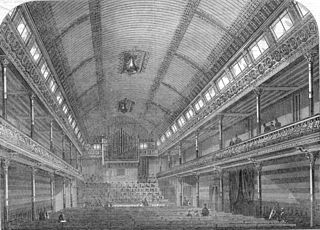
St. George's Hall was a theatre located in Langham Place, off Regent Street in the West End of London. It was built in 1867 and closed in 1966. The hall could accommodate between 800 and 900 persons, or up to 1,500 persons including the galleries. The architect was John Taylor of Whitehall.

Cumberland Market was a London market between Regent's Park and Euston railway station. It was built in the early 19th century and was London's hay and straw market for a hundred years until the late 1920s. An arm of the Regent's Canal was built to the market. The market was surrounded by modest housing, and in the early 20th century became an artistic community. The original houses were demolished during and after the Second World War and it is now a housing estate, known as Regent's Park Estate.
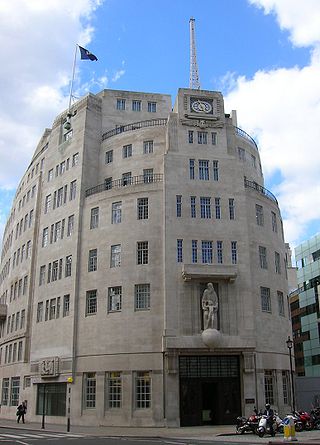
George Valentine S. Myer was an English architect and portrait painter appointed by the British Broadcasting Corporation to design one of the first purpose built broadcast buildings in the world, Broadcasting House, Langham Place, London completed in 1932.

Marylebone is an area in London, England and is located in the City of Westminster. It is in Central London and part of the West End. Oxford Street forms its southern boundary.
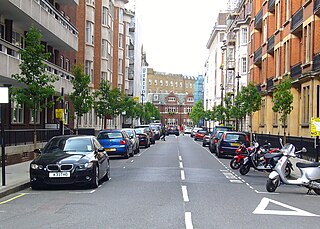
Hallam Street is a road situated in the Parish of St Marylebone and London's West End. In administrative terms it lies within the City of Westminster's West End Ward as well as the Harley Street Conservation Area. Formerly named both Charlotte Street and Duke Street, it was renamed in the early 1900s after Henry Hallam (1777–1859), a noted historian who had been a local resident, and his son Arthur Henry Hallam (1811–1833), poet and the subject of Tennyson's elegy In Memoriam.
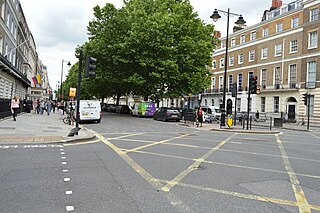
Portland Place is a street in the Marylebone district of central London. Named after the 3rd Duke of Portland, the unusually wide street is home to the BBC's headquarters Broadcasting House, the Chinese and Polish embassies, the Royal Institute of British Architects and numerous residential mansion blocks.

St Mary, Haggerston, was an Anglican parish church built to the designs of John Nash in 1827, in what is now the London Borough of Hackney. Built in the Gothic style of its time, it had an elaborate west front with a disproportionately tall tower. The rest of the church was, in comparison, rather plain. It was altered later in the 19th century by James Brooks as the first initiative of the Haggerston Church Scheme, and destroyed by bombs during the Second World War. The site is now a children's playground west of Haggerston Park, between Thurtle Road and Queensbridge Road.
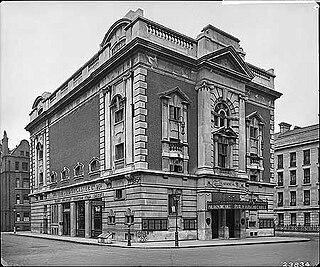
The Philharmonic Hall, 97 Great Portland Street, London, originally the St James's Hall, was built in 1907–08 to replace the St James's Hall that once stood in Regent Street. The building was then used by the BBC and known as Brock House. It is now leased to The Office Group.
